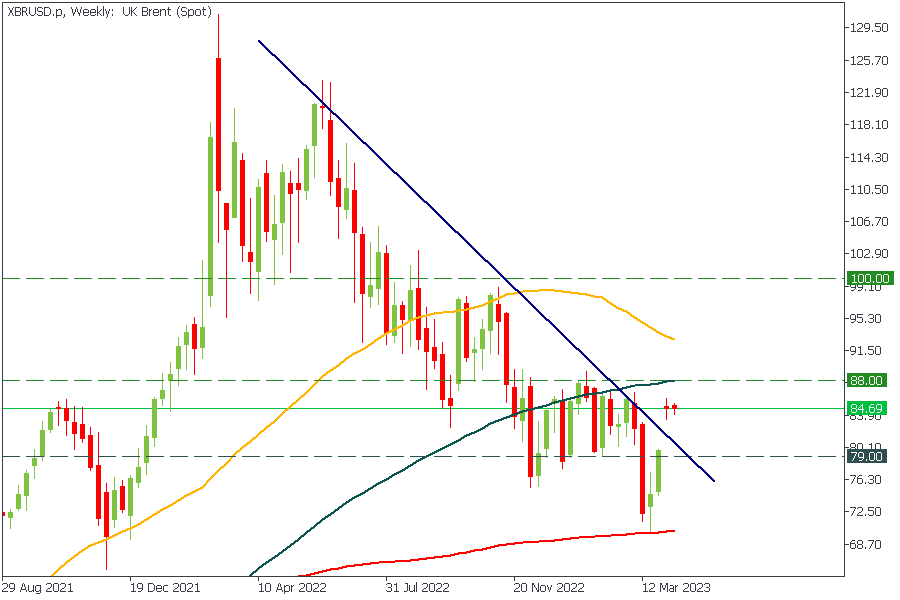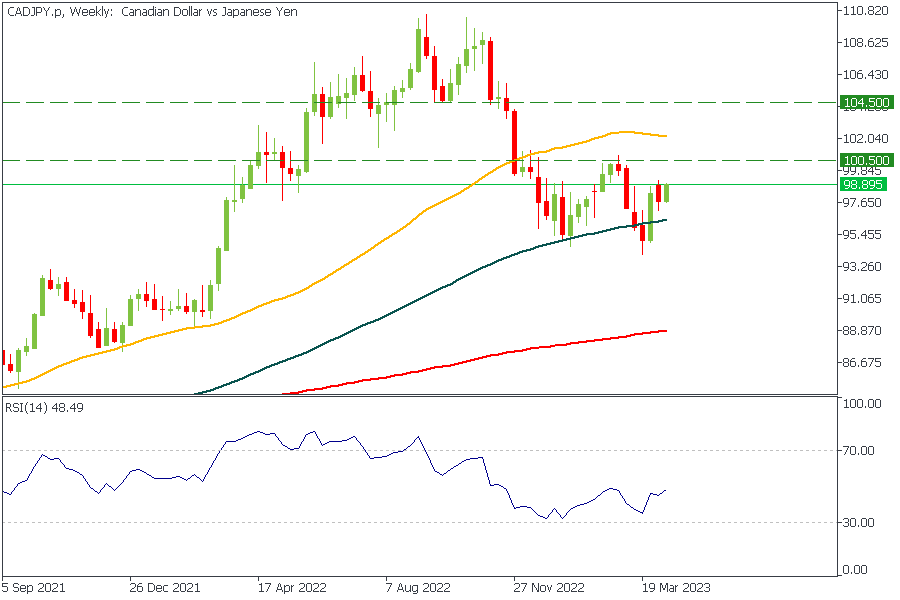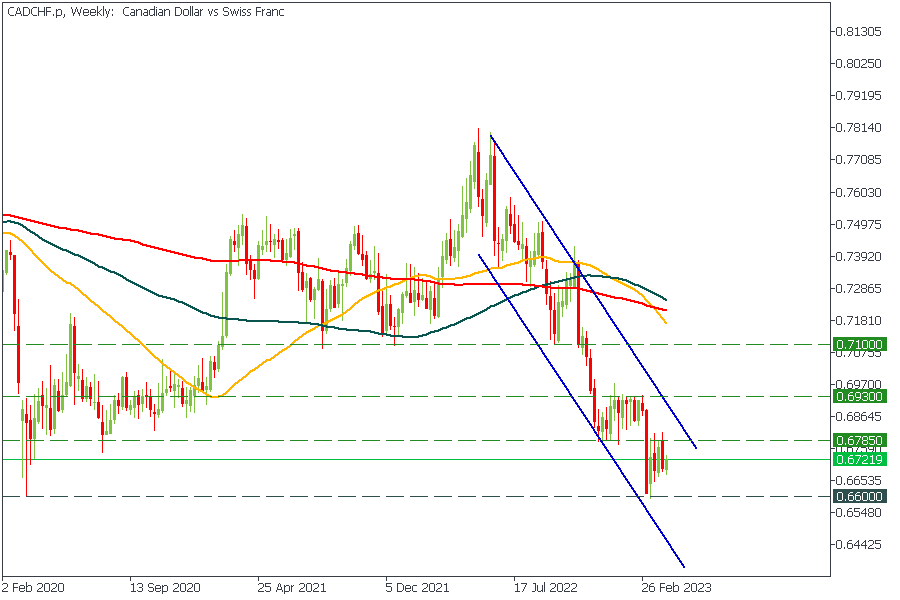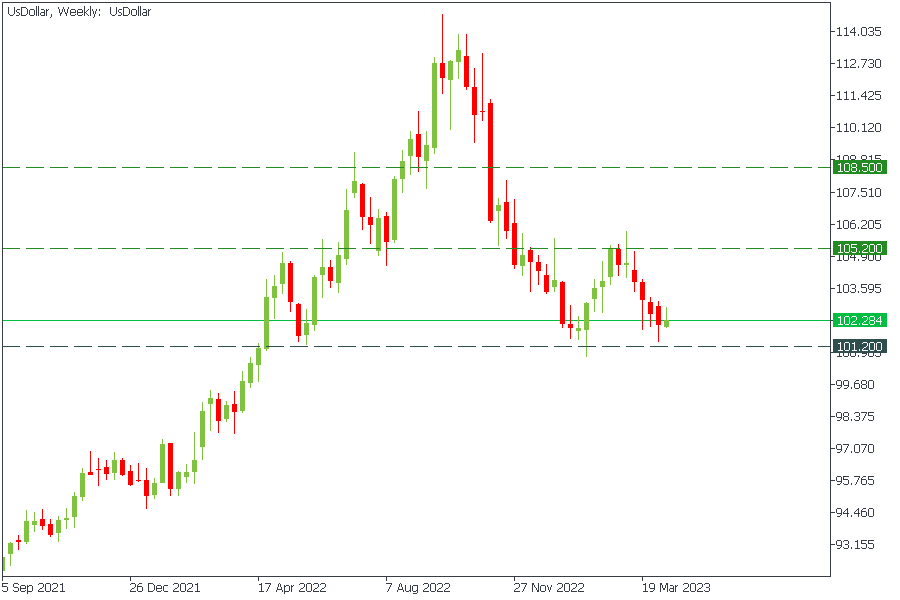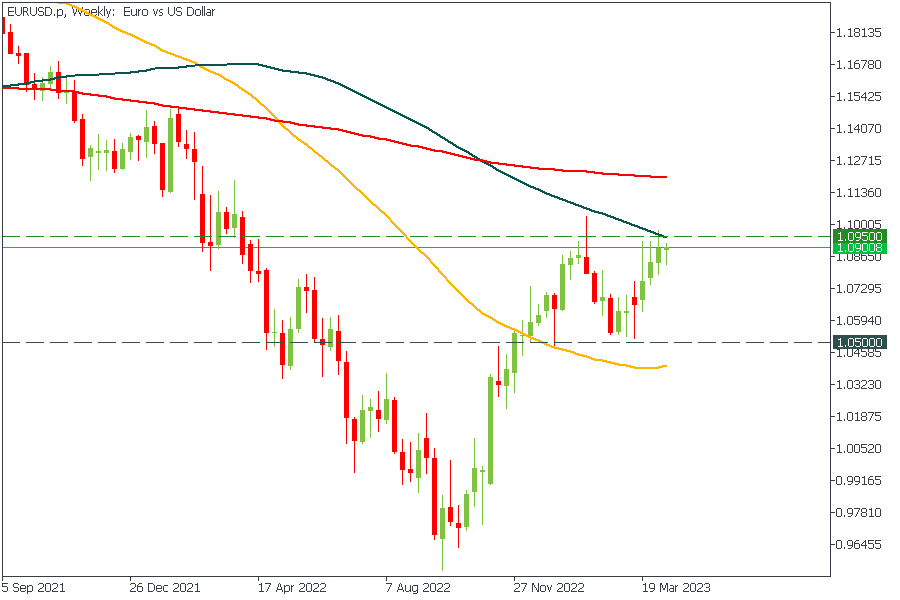Oil prices skyrocketed after OPEC+ announced on April 3 that the alliance would cut production by 1 million barrels per day starting May 2023. With the recent Russian cut by 0.5 million barrels per day in March, the overall decline will be 1.5 million barrels per day, lasting until the end of 2023.
A reversal in oil prices, declining since March 2022, could make it much more difficult for central banks to lower inflation and force them to tighten monetary policy. The currencies of countries with the most hawkish central banks may outperform the market. Moreover, the currencies of oil-exporting countries may also strengthen significantly in 2023.
This article describes the currencies that would benefit from the OPEC+ decision and how it can affect risky assets.
Canadian Dollar
The Canadian dollar strongly correlates with Brent crude oil prices due to Canada's heavy reliance on oil exports. Canada is a major producer of crude oil, and its economy is closely tied to the energy sector. As a result, oil price fluctuations can significantly impact the Canadian dollar's value.
Brent crude oil is a benchmark for global oil prices, and various factors, including supply and demand dynamics, geopolitical tensions, and global economic conditions, influence its price. As Brent crude oil prices rise, the value of the Canadian dollar tends to increase, as the increased revenue from oil exports strengthens the Canadian economy and boosts demand for the currency.
Conversely, when Brent crude oil prices fall, the value of the Canadian dollar tends to decline, as the weaker oil sector weighs on the economy and reduces demand for the currency.
The past rise in oil prices may begin a new bullish trend. XBRUSD bounced off the 200-week moving average and broke above the descending trendline. The major resistance here is the 88.00, the 100-week MA. If the price overcomes this level, if will close the double bottom pattern, opening the way to 100.00. In this case, Canada will get a strong export increase, significantly strengthening the CAD.
For example, CADJPY has formed a bullish divergence on the weekly chart. When the price breaks above 100.50, it will close a double bottom pattern with the target at 104.50, which is around 4000 points increase.
CADCHF has formed the descending channel. Currently, the price is consolidating between 0.6600 and 0.6785. A breakout above the resistance level and descending trendline will set targets at 0.6930 and 0.7100. However, traders should also be aware of decline to 0.6600, giving them a great opportunity to open buy trades at February 2020 low.
US Dollar
The US dollar may be another currency that will benefit significantly from the decline in oil production.
The actions of the "cartel" can lead to a sharp jump in gasoline prices. Compounding the problem is that Biden's administration will not be able to control the oil price, as it did the previous two years, by depleting oil stocks accumulated under Trump. To date, US oil inventories are at their lowest levels since 1980, making it much more difficult for the US to adjust prices.
Moreover, the drop in supply in the oil market supply drop will be superimposed on the summer car season. That's why Because of this, gasoline prices are already projected to rise to $4 per gallon.
This, in turn, will provoke an increase in general inflation. The Fed will not be able to ease policy ahead of time to save the banks.
Most likely, the decline in inflation in the US and the EU will now slow down. It means that rates will continue to grow, pushing the USD up, while risky assets (stocks and cryptocurrencies) will depress.
The US dollar index is approaching the 101.20 support level. If buyers hold this level, the index might form a double bottom pattern with targets at 105.20 and 108.50, 4000 and 7500 points, respectively.
Moreover, EURUSD reached the 100-week moving average and the resistance level of 1.0950. Thus, a correction toward 1.0500 is highly possible, which aligns with the general sentiment.
Summary
The decision of OPEC+ will have a strong impact on financial markets in 2023, as the cost of oil directly affects the costs of households and ordinary people. In the middle term, rising oil prices will positively affect the CAD and USD and pressure instruments that are inversely correlated with the greenback, such as the cryptocurrency and stock markets.
***
FBS is an international brand present in over 150 countries. Independent companies united by the FBS brand are devoted to their clients and offer them opportunities to trade Margin FX and CFDs.
